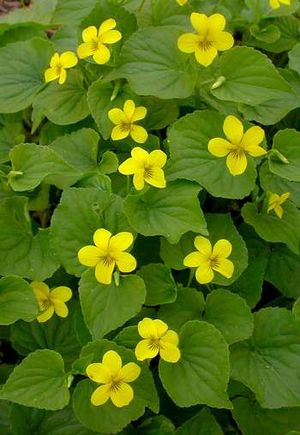Difference between revisions of "Viola glabella"
| Line 1: | Line 1: | ||
| − | [[File:VIGL BenLegler veg good.jpg|thumb|300px|''Viola Glabella'' Photo Credit Ben Legler]] | + | [[File:VIGL BenLegler veg good.jpg|thumb|300px|''Viola Glabella'' Photo Credit Ben Legler]] <br /> |
| + | |||
''Viola Glabella'', Violaceae, Stream violet, Yellow Wood Violet, Pioneer Violet | ''Viola Glabella'', Violaceae, Stream violet, Yellow Wood Violet, Pioneer Violet | ||
==Taxonomy== | ==Taxonomy== | ||
Revision as of 10:33, 23 April 2012
Viola Glabella, Violaceae, Stream violet, Yellow Wood Violet, Pioneer Violet
Contents
Taxonomy
Description
General: Puberulent perennial from widely spreading, scaly, fleshy rhizomes, the flowering stems 5-30 cm. tall, leafless the lower two-thirds.
Leaves: Leaf blades ovate-cordate to reniform, abruptly pointed, the basal leaves with petioles 10-20 cm. long; stipules membranous, ovate to obovate, 5-10 mm. long, entire.
Flowers: Flowers 8-14 mm. long, borne chiefly on the upper part of the stem, on peduncles about as long as the leaves; spur very short; petals clear yellow, the lower 3 with purple penciling, the lateral pair well bearded; style head copiously bearded.
Fruit: Fruit a 3-valved capsule, ovary superior, placentation parietal, seeds brown.
Bloom Period
Flowering
Time: March-July
Crop Intervals: Perennial
Distribution
Both sides of the Cascades in Washington, Alaska to California, east to Montana
Habitat
Moist woods and stream banks, low to mid-elevations in the mountains
Uses
Landscaping: Smooth yellow violet is easy to establish in woodland gardens. It may reseed and can become a bit invasive
Young leaves and flower buds - raw or cooked. When added to soup they thicken it in much the same way as okra. Some caution is advised, the yellow flowers of this species can cause diarrhea if eaten in large quantities. A tea can be made from the leaves.

